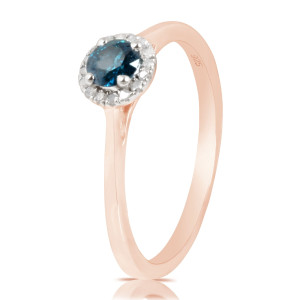When you look at diamonds in jewelry stores, they may all seem colorless. But if you look closely, you'll notice that they normally have slight tints of yellow, gray or brown. The strength of these tints partially determines the price of the diamond. Normally the less color a diamond has the more it costs. However, prices start rising when the color reaches a point just stronger than light yellow (a grade designated as fancy yellow). As the intensity of fancy-yellow diamonds increases so does their price. Four-carat diamonds with a very intense yellow color have commanded prices as high as $50,000 per carat.
The most widely used color grading system is the one developed by the GIA (Gemological Institute of America), which identifies colors with alphabetical letters ranging from D to Z+. It is so well known throughout the world that even if your jeweler uses another system, he should know how to translate his grades into GIA grades. The following diagram helps explain the meaning of the GIA color grades. Brown and gray diamonds are graded on the same scale.
D E F
colorless
G H I J
near colorless
K L M
faint yellow
N to Z
very light to light yellow
Z+
fancy yellow
Colorless for 0.50 ct or less, near colorless for heavier stones.
In terms of price, D (no color) is the most expensive color and N through Z (the darker colors) the least expensive. D, E and F represent the most expensive diamond color grades because they are rare and in high demand. The nuances of color are so fine between the grades that the average consumer cannot tell the difference between a D and F color. However, the price difference between D and F color diamonds may be as much as a 10% to 20%, depending on their size and clarity. Professionals must rely on comparison stones to determine color grades, and even then it can be hard to distinguish between a D or E color diamond, for example.
If you're interested in a diamond that looks colorless, stones with a grade from D to J can meet your needs. When they're mounted, it's not easy to see the difference between colorless and near colorless grades face up. If you prefer warmer colors, consider getting a color above K. It's better to compromise on color than on cut quality and transparency when your budget is limited.
D to J color diamonds are sometimes referred to as white diamonds. This book normally uses the term colorless to describe these diamonds because "white" is not an accurate color description. In addition, there are translucent milky diamonds which are really white, making the term "white diamond" an ambiguous term. You should know, however, that if a trade professional describes one diamond as whiter than others, this normally means the stone has a higher color grade.
If you're buying the diamond for personal enjoyment, it doesn't matter what color you select as long as you like it and it looks good on you. But if you're buying the diamond for investment purposes, you're better off selecting an untreated diamond in the D to F range.
Diamonds with a tinge of yellow (K to Z grades) are fairly common. Consequently, they are less expensive than colorless diamonds and often used in discount jewelry. This doesn't signify they're inferior. Some people prefer a yellow tint because it conveys a feeling of warmth or because it might look good with their skin color. Fine quality jewelry stores also use these diamonds in their jewelry in order to meet the needs of all their clientele.
In order to see the difference between colorless and faint yellow diamonds when they're mounted in jewelry, you'll probably have to put jewelry pieces with the two qualities side by side. The yellowish diamonds will blend in more with the gold and the colorless diamonds will provide more of a contrast and probably look brighter. The color difference is more obvious when you view loose diamonds through the side with the table (top facet) down.
Not all diamonds in the K to Z range are yellowish. Some are brownish. Brownish tinted diamonds are the least expensive color of diamonds used for jewelry because there's less of a market for them. If diamond rings are being promoted at unusually low prices, there's a good chance that brownish goods have been used. This doesn't mean these rings are of inferior quality.
It only means that the store can afford to offer them at a lower price because it paid less (probably 30% to 50% less). Brownish tinted diamonds go with any color of clothing, and they can be used to create distinctive designs (see Figure 3). A promotional term for light brownish-tinted diamonds is champagne diamonds. Darker brown diamonds are sometimes referred to as cognac diamonds or fancy cognacs.
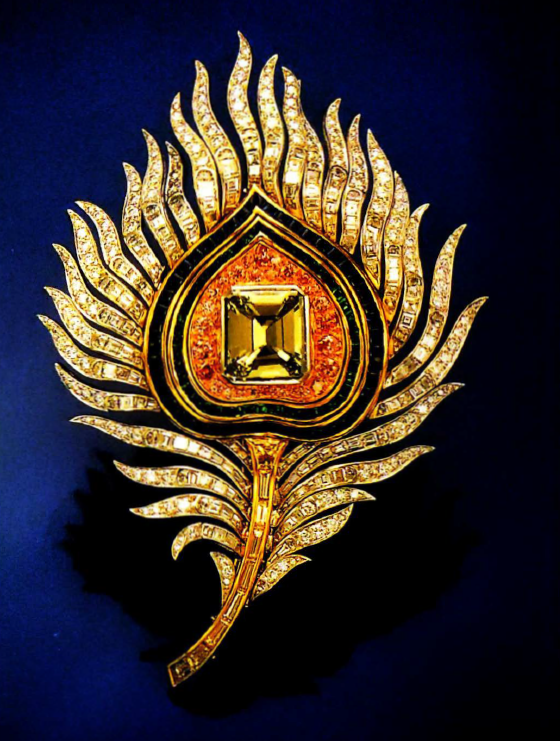 |
|
Figure 1 - This delicate peacock feather pin feattires an 8-carat, natural-color green diamond together with pink, yellow and near colorless diamonds. Sapphires and emeralds encircle the pink diamonds.
|
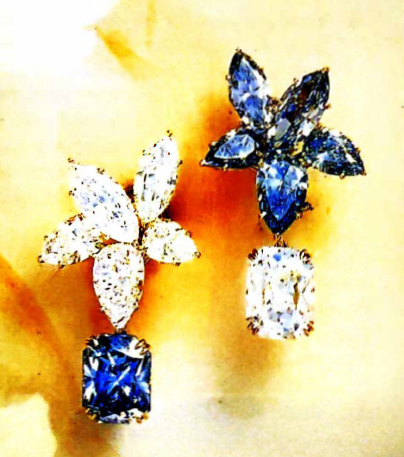 |
|
Figure 2 - S.2 Blue and colorless diamond earrings with two interchangeable drops-a 7.08 carat blue diamond and a 7.38 carat F-color diamond.
|
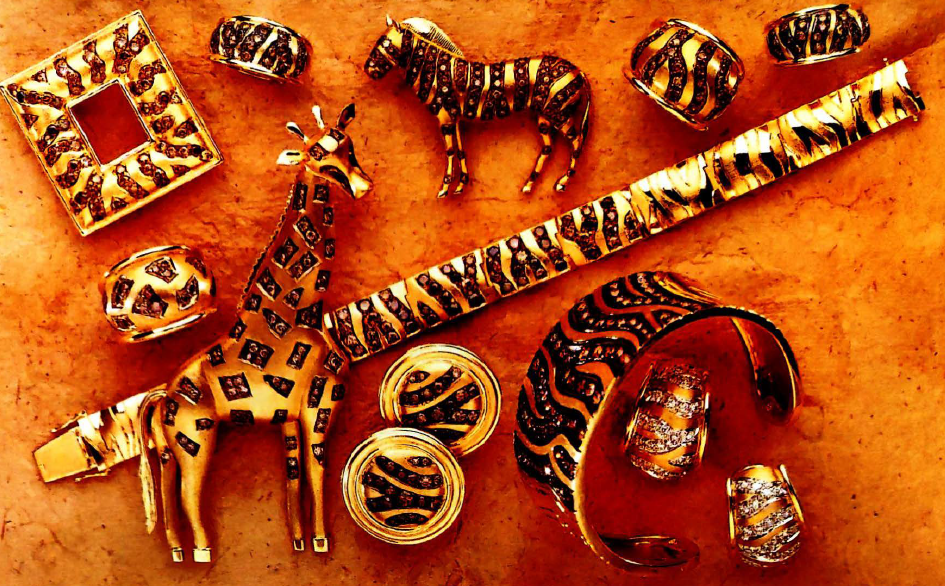 |
|
Figure 3 - Brown diamonds creatively used in 18K gold jewellery.
|
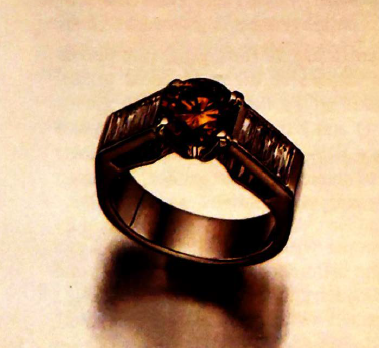 |
|
Figure 4 - An attractive brown diamond accented by colorless baguettes.
|
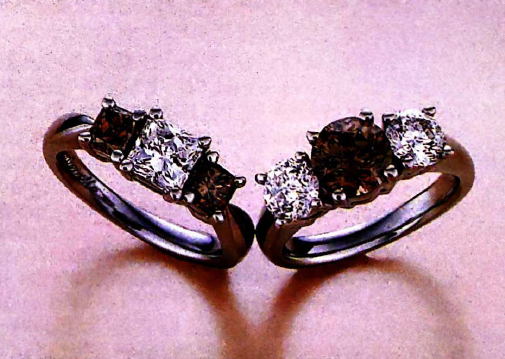 |
| Figure 5 - Platinum rings set with brown and colorless Gabrielle diamonds. The rings are also available with pink or yellow diamonds. |
| |














































